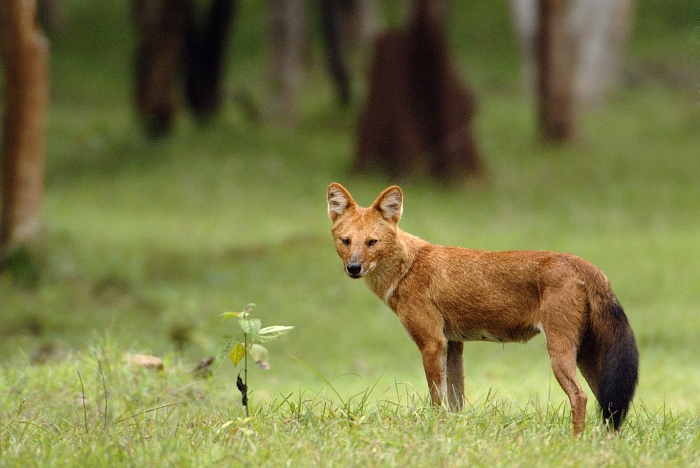Khaptad on:
[Wikipedia]
[Google]
[Amazon]
Khaptad National Park is a
 Khaptad National Park harbours 23
Khaptad National Park harbours 23
national park
A national park is a nature park designated for conservation (ethic), conservation purposes because of unparalleled national natural, historic, or cultural significance. It is an area of natural, semi-natural, or developed land that is protecte ...
in the Far-Western Region, Nepal that was established in 1984. Stretching over the four districts of Bajhang, Bajura
Bajura District ( ), a part of Sudurpashchim Province, is one of the seventy-seven districts of Nepal. The district, with Martadi (today part of Badimalika municipality) as its district headquarters, covers an area of and had a population o ...
, Achham and Doti
Doti (), also known as Dotigarh (डोटीगढ़) or the Far-Western Development Region was a development region of Nepal situated between River Kali bordering Kumaon division of Uttarakhand, India in the west and the Karnali river on t ...
it covers an area of and ranges in elevation from .
History
Khaptad National Park was established in 1984 on the advice of Khaptad Baba; a buffer zone of was declared in 2006.Vegetation
Khaptad National Park consists of moorland, steep slopes and streams, with 567flora
Flora (: floras or florae) is all the plant life present in a particular region or time, generally the naturally occurring (indigenous (ecology), indigenous) native plant, native plants. The corresponding term for animals is ''fauna'', and for f ...
l species. Vegetation types include chir pine-rhododendron
''Rhododendron'' (; : ''rhododendra'') is a very large genus of about 1,024 species of woody plants in the Ericaceae, heath family (Ericaceae). They can be either evergreen or deciduous. Most species are native to eastern Asia and the Himalayan ...
forest, oak
An oak is a hardwood tree or shrub in the genus ''Quercus'' of the beech family. They have spirally arranged leaves, often with lobed edges, and a nut called an acorn, borne within a cup. The genus is widely distributed in the Northern Hemisp ...
forest and Himalayan fir- hemlock-oak forest and alder
Alders are trees of the genus ''Alnus'' in the birch family Betulaceae. The genus includes about 35 species of monoecious trees and shrubs, a few reaching a large size, distributed throughout the north temperate zone with a few species ex ...
forest in riverine areas.
Medicinal plants
Medicinal plants, also called medicinal herbs, have been discovered and used in traditional medicine practices since prehistoric times. Plants synthesize hundreds of chemical compounds for various functions, including Plant defense against h ...
encompass 224 species.
Fauna
 Khaptad National Park harbours 23
Khaptad National Park harbours 23 mammal
A mammal () is a vertebrate animal of the Class (biology), class Mammalia (). Mammals are characterised by the presence of milk-producing mammary glands for feeding their young, a broad neocortex region of the brain, fur or hair, and three ...
s including Indian leopard
The Indian leopard (''Panthera pardus fusca'') is a subspecies of the leopard (''P. pardus''). It is widely distributed on the Indian subcontinent. It is threatened by illegal trade of skins and body parts, and persecution due to human-leopard ...
, Himalayan black bear
The Himalayan black bear (''Ursus thibetanus laniger'') is a subspecies of the Asian black bear. It is distinguished from '' U. t. thibetanus'' by its longer, thicker fur and smaller, whiter chest mark. The species is considered an ecological ind ...
, dhole
The dhole ( ; ''Cuon alpinus'') is a canid native to South, East and Southeast Asia. It is anatomically distinguished from members of the genus ''Canis'' in several aspects: its skull is convex rather than concave in profile, it lacks a third ...
and Alpine musk deer; 287 bird
Birds are a group of warm-blooded vertebrates constituting the class (biology), class Aves (), characterised by feathers, toothless beaked jaws, the Oviparity, laying of Eggshell, hard-shelled eggs, a high Metabolism, metabolic rate, a fou ...
species include the Impeyan pheasant
The Himalayan monal (''Lophophorus impejanus''), also called Impeyan monal and Impeyan pheasant, is a pheasant native to Himalayan forests and shrublands at elevations of . It is part of the family Phasianidae and is listed as Least Concern on th ...
, peregrine falcon
The peregrine falcon (''Falco peregrinus''), also known simply as the peregrine, is a Cosmopolitan distribution, cosmopolitan bird of prey (raptor) in the family (biology), family Falconidae renowned for its speed. A large, Corvus (genus), cro ...
and white-rumped vulture
The white-rumped vulture (''Gyps bengalensis'') is an Old World vulture native to South and Southeast Asia. It has been listed as Critically Endangered on the IUCN Red List since 2000, as the population severely declined. White-rumped vultures di ...
; 23 amphibian
Amphibians are ectothermic, anamniote, anamniotic, tetrapod, four-limbed vertebrate animals that constitute the class (biology), class Amphibia. In its broadest sense, it is a paraphyletic group encompassing all Tetrapod, tetrapods, but excl ...
s and reptile
Reptiles, as commonly defined, are a group of tetrapods with an ectothermic metabolism and Amniotic egg, amniotic development. Living traditional reptiles comprise four Order (biology), orders: Testudines, Crocodilia, Squamata, and Rhynchocepha ...
s have also been recorded.
References
External links
* * {{authority control National parks of Nepal 1984 establishments in Nepal